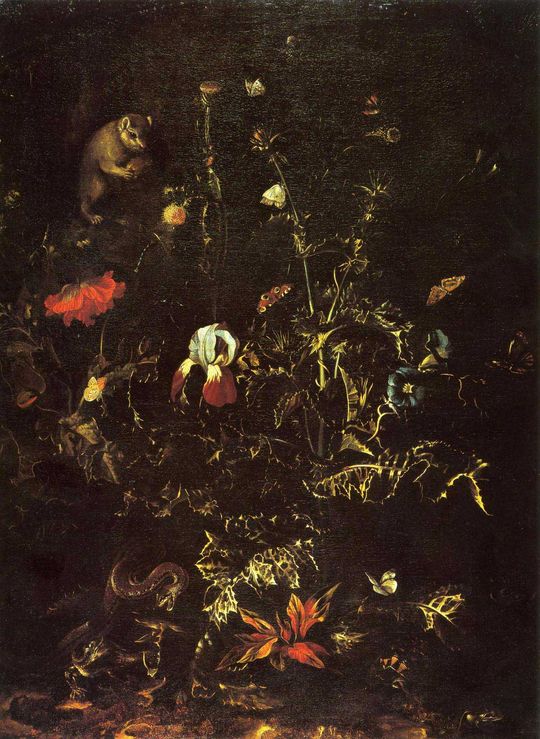Thistle, Squirrel, Reptiles and Insects
Circa 1660

Oil on canvas
873-1-367
Bequeathed by Jean-Marie de Silguy in 1864
H. 135,5 cm - L. 102 cm
Van Schrieck specialised in very precise views of strange and mysterious undergrowth, dotted with disturbing animals and reptiles. This type of « landscape » or « still life » corresponds to scientific speculation (the microcosm is equivalent to the macrocosm) brought about by research into optics and naturalistic curiosity.
Its death symbolism also relates to the « vanities » used for meditation purposes by Protestants deprived of religious imagery.
Thistle, Squirrel, Reptiles and Insects
Circa 1660

Oil on canvas
873-1-367
Bequeathed by Jean-Marie de Silguy in 1864
H. 135,5 cm - L. 102 cm
Van Schrieck specialised in very precise views of strange and mysterious undergrowth, dotted with disturbing animals and reptiles. This type of « landscape » or « still life » corresponds to scientific speculation (the microcosm is equivalent to the macrocosm) brought about by research into optics and naturalistic curiosity.
Its death symbolism also relates to the « vanities » used for meditation purposes by Protestants deprived of religious imagery.
